Why No One Can Get a Job in 2025
I know world-class candidates who've been unemployed for 12+ months. Here's what's really happening.
Hi, I’m Jamaal. Welcome to Jamaal’s Letter, where I share insights, predictions, and strong opinions on the future of markets, work, business, tech, and more.
The people who read this newsletter are the people who run the world. If you aren’t yet a subscriber, consider joining them by subscribing below. Please share it with your friends and colleagues if you find it helpful:
Read time: 10 minutes
In early 2023, I’d just wrapped a stint investing venture capital for a philanthropic family office. I’d turned my former employer into a client, but hadn’t officially started the investment and advisory practice I’ve been building for the past few years. So while I worked my network to find my next job, I also applied for jobs online
At the time, nothing was more efficient than LinkedIn’s "Easy Apply" button. I could filter by job type, hit submit a dozen times, and get a few interviews by the end of the week. Within days of my first submissions, I was fielding conversations to join an impact private equity firm, lead strategy at a fintech startup, lobby lawmakers on behalf of hedge funds, and raise capital for a global VC fund.
That wasn’t that long ago. But it might as well have been a different labor market.
Today, I know world-class candidates — wicked sharp, world-class credentialed, with rolodexes to die for — who have been out of work for six, nine, twelve months or longer. They’re being ghosted. They’re being slow-walked. They’re applying and hearing nothing. And they’re not alone.
Despite a 4.2% unemployment rate — a near 50-year low — the labor market for white-collar professionals is frozen. People are stuck. And even when roles do open, the process feels broken. The same people who once got three interviews in a week now can’t get a phone screen.
The internet is rife with debates about why the labor market is as fraught today as it is. Are we in a white collar recession? Is AI taking all of the jobs? Is the system broken, or is this just the new normal?
Maybe. No. Yes, and yes.
Here’s why it seems like no one can get a job in 2025:
Applying for jobs is opaque, fragmented, and designed for employers, not job seekers
There’s no transparency in the job application process. When you hit "apply," you’re sending your resume into a black hole. You don’t know if a human will see it. You don’t know what part of the application matters. You don’t know if the role is still open or if they’re already in final rounds with someone else. You don’t know if the hiring manager is even looking.
If you had that information, you’d behave differently. If you knew two people were in the final rounds, you’d skip the application altogether. If you knew no one had been interviewed and you were a great fit, you might take the time to tailor your materials to the position. Instead, you “spray and pray.”
But because everyone’s spraying and praying, recruiters and hiring managers get buried. They get 1,000 applications. They can’t look at them all. So, naturally, they outsource the screen, filter by keywords, and defer to software. The result: no one’s really sure what works. No one knows how to stand out. Everyone’s frustrated.
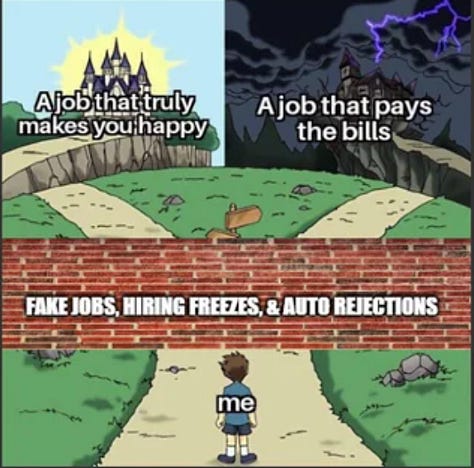
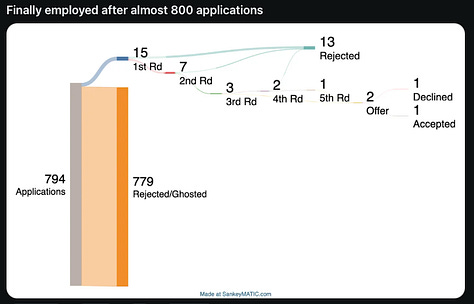
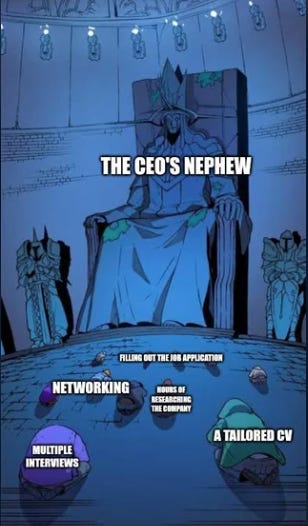
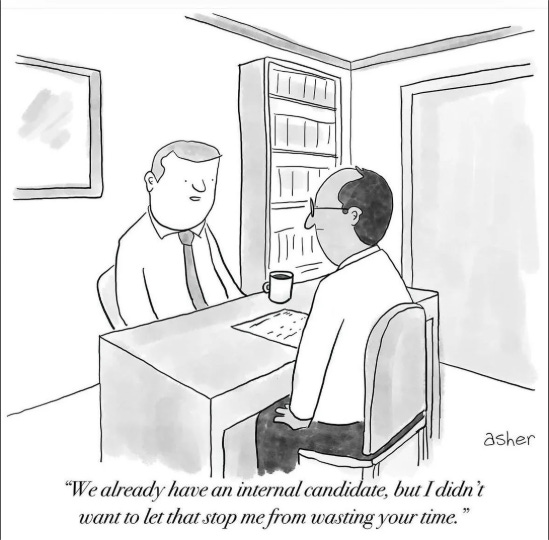
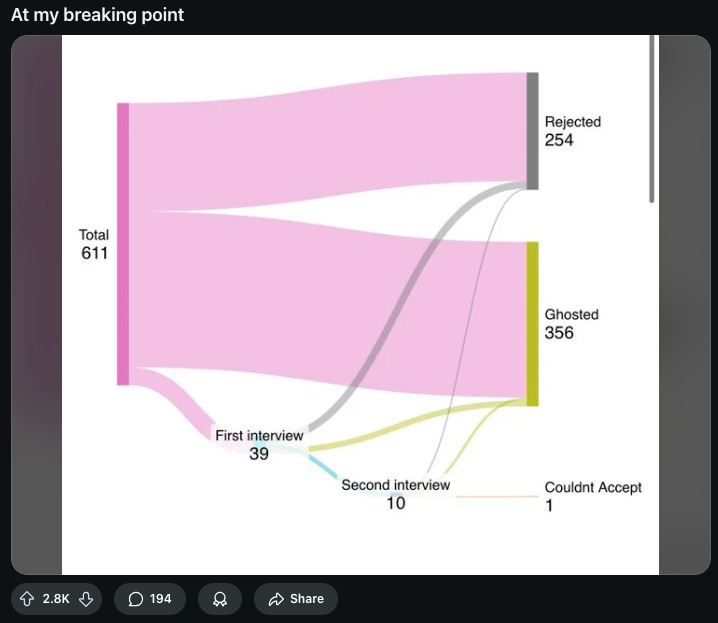
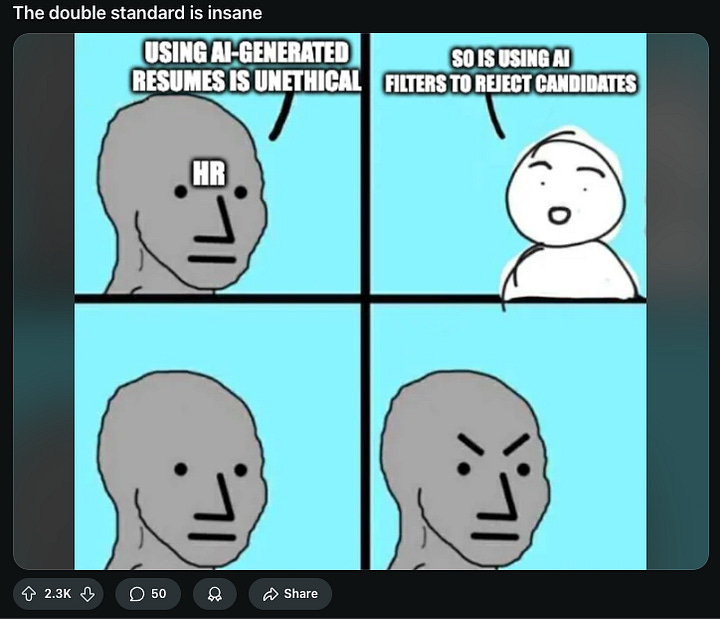
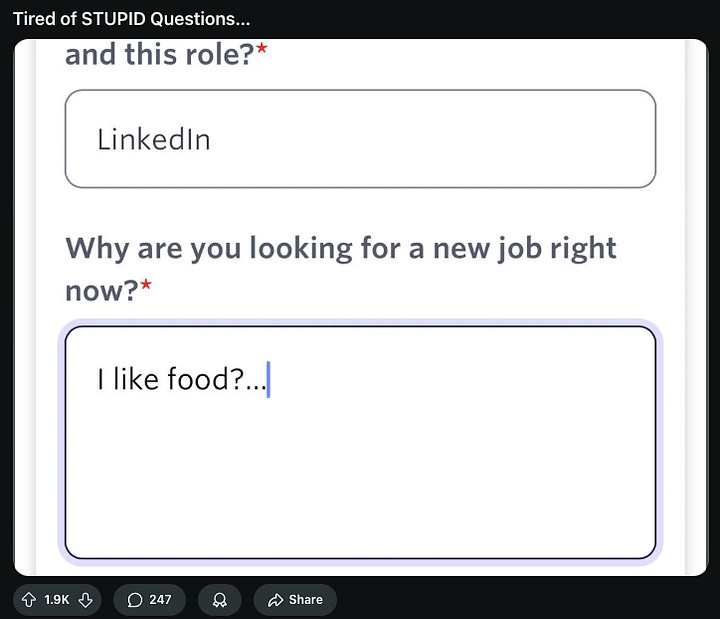
On top of that, there’s no standardization. One recruiter tells you to always write a cover letter, while a hiring manager proudly declares she never reads them. The same goes for thank-you notes — some expect them, some ignore them, some think they’re cringe. Some job portals ask knockout questions — a screening question used in the application to quickly determine if a candidate meets basic criteria, allowing employers to filter out unsuitable applicants efficiently. Others want 500-word essays. And then there’s Workday, which is the single worst interface in corporate hiring. It asks you to manually retype your entire resume, job by job, bullet by bullet. None of this improves outcomes for job seekers; most of it just wastes their time.
Job applications could benefit from the kind of standardization that transformed college admissions. The Common App didn’t solve everything, but it did make the process more coherent. For the unfamiliar, the Common App is an undergraduate college admission application system used by many colleges and universities, which allows students to apply to multiple schools using a single online platform, rather than submitting different applications to each school. Before it, applying to college meant juggling different formats, deadlines, and paperwork for every school. That’s exactly what job seekers are doing now. And just like in college admissions, standardization in hiring wouldn’t fix the deeper problems, but it would help candidates focus their effort where it matters most.
I can think of a dozen companies building cutting-edge, AI-infused tools to make job searching or hiring more efficient. But most of these innovations sit at the margins. They’re designed for the people who pay for software—employers. The systems that govern hiring workflows are purchased, implemented, and optimized by companies, not candidates. This means that candidate transparency is not a priority. And this problem—lack of transparency—is structural. It existed long before the pandemic, the “Great Resignation” that followed, or the rise of AI. Unless the industry adopts a new norm or builds a fundamentally different kind of tool, it will persist long after the current frozen market thaws. There are ways to fix it. But the incentives are misaligned. And until that changes, we’ll keep getting smarter tools that reinforce the same broken dynamics.
Everyone’s using AI, and everyone is skeptical of everyone else using AI.
Second, we’re in the midst of an AI arms race. Both applicants and employers are using AI, and neither side likes it. Because applicants don’t know where to focus their time—and because the process lacks transparency—they often turn to AI tools for efficiency. That might mean using AI to write a cover letter, optimize a resume, or even complete the application itself.
Employers are using AI or other automation tools to scan them. Applicants fear their materials are being tossed by bots, which only reinforces the “spray and pray” strategy and the belief that it’s a numbers game. Recruiters worry they’re being spammed by ChatGPT. In some cases, applicants are using AI to catfish their interviewers. There’s no trust. And the noise-to-signal ratio keeps going up.
Most organizations don’t know what to do with AI, so they’re frozen.
Two and a half years since ChatGPT was launched, leadership teams are still paralyzed by AI. Outside of tech, most companies still don’t know how to deploy it productively. More than 99% of all businesses in the U.S. make money doing something other than software. These companies are playing catch-up, just now answering the “what’s our AI strategy?” question from their boards, which are half filled with directors who are still using ChatGPT as a Google replacement. These organizations are ill-equipped for the coming AI revolution. They’ve been told AI will transform everything. But they don’t know how. So they’re waiting. They’re not hiring because they don’t know what they need. They’re unsure whether to invest in new headcount or hold off while they figure out if AI can replace those roles, where their operations are most exposed to disruption, or whether upskilling their existing teams might be the smarter bet.
I’ve been advising executives and boards to experiment with internal tools, harness proprietary data, build institutional muscle around LLMs, and monetize their IP. But most haven’t. They’re waiting for clarity. And because real innovation is being done quietly — often in stealth — they’re not seeing the best use cases either. All they see is hype and headlines.
Economic uncertainty is stalling hiring.
The macroeconomic environment is uncertain at best. Interest rates are high compared to a few years ago. Growth is tepid, given that since the end of 2022, we’ve been in a “will-we-or-won’t-we” recession cycle. Unpredictable tariff hikes and escalating trade tensions have added to the uncertainty. How can any firm with an overseas supply chain make meaningful investments when they can’t reliably predict what, if any, tariffs they’ll be facing in the next 30 days?
Meanwhile, record-high economic policy uncertainty — measured by indices that have surpassed even the peaks of the 2008 financial crisis and the pandemic — has eroded business and investor confidence, increased financial market volatility, and pushed up borrowing costs across the board.
These overlapping sources of uncertainty leave boardrooms and C-suites in wait-and-see mode. Especially for knowledge work. Especially in sectors where headcount is the first place to cut. Especially in sectors sensitive to policy and financial conditions.
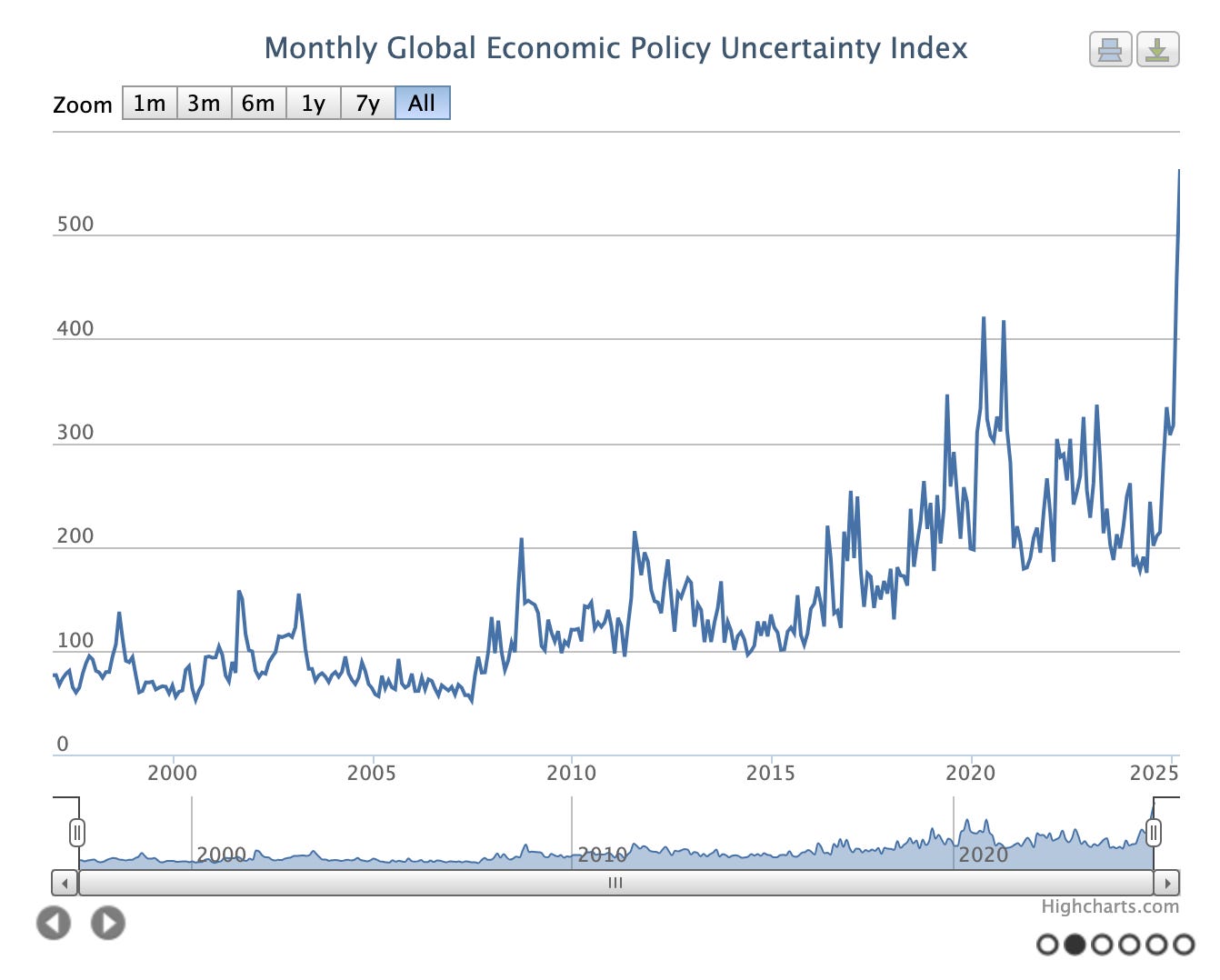
Geopolitical chaos is creating whiplash and making public sector and international exposure feel risky.
On top of all of that: geopolitical chaos.
A remaking of the post-WWII global order. Another war in the Middle East, on the literal shores of the world's most important oil chokepoint. A lingering war in Europe. A hasty-but-inefficient, not-clear-if-it's-over attempt to dramatically shrink the U.S. federal government. Executive branch whiplash.
The uncertainty of where this all leads would pour cold water on many aggressive hiring plans. This is especially true for industries that are directly or indirectly exposed to the public sector, rely on government funding, or have significant exposure to certain international markets.
This isn’t just a frozen market. It’s a systems failure.
Put it all together, and you get this weird labor market: jobs exist, but to most, they’re not accessible. Talent is available, but it’s not moving. Everyone’s stuck. Everyone’s skeptical. Everyone’s tired.
Some of this is structural. A hiring system optimized for employers, built around broken infrastructure, warped incentives, and a total lack of transparency. But some of this is contextual. A frozen, uncertain moment shaped by macro forces — economic, political, and technological — that will eventually shift.
Will the pendulum swing back? Probably. At some point, we’ll return to a market with more clarity and confidence — maybe even one that looks like the post-pandemic boom, when "Easy Apply" felt like a cheat code and some candidates had too many interviews to manage.
And we shouldn't lose sight of the long arc. The pandemic marked the beginning of a generational shift in power from companies to workers. The normalization of remote work has permanently expanded the boundaries of what’s possible. Over time, that shift won’t just unlock new geographies, it will redefine the nature of knowledge work itself. Instead of trading time for money, more workers will trade output for money. And that transformation, slow as it may be, is irreversible.
But the underlying flaws of the job application process — no transparency, no standardization, poor allocation of effort from job seekers — will remain. Unless we shift the norms or rewrite the rules, we’ll be back in this same mess the next time the market tightens.
So if it feels like you can’t get a job in 2025, you’re not imagining things. You’re stuck in a system that wasn’t designed with you in mind. And unless we change it, the best people will keep sitting on the sidelines, refreshing job boards, and wondering why nothing’s moving.
It’s not you. It’s all of it. And it needs to change.
Does your board need members who can reveal blind spots, anticipate risks, tackle M&A, or engage confidently with capital markets? Let’s connect. Reach out if your board is seeking fresh, financially sophisticated leadership.
👋🏿 I’m Jamaal Glenn. I serve on boards to help organizations navigate growth, risk, and complexity with financial discipline and bold, future-focused strategy. My career spans $70 billion in capital markets and M&A transactions, venture capital leadership, and scaling technology and media businesses backed by luminaries like Eric Schmidt, Pierre Omidyar, and leading global family offices. I’ve chaired audit and finance committees and advised institutional investors that deploy billions into cutting-edge sectors, including AI, fintech, and digital infrastructure. As a Qualified Financial Expert, I bring not only deep capital markets and deal expertise, but also operational leadership—having built, scaled, and exited ventures, raised over $150 million from institutional investors, and helped shape the growth strategies of both startups and Fortune 500-caliber enterprises. I pair financial rigor with a governance mindset, positioning me to join—and ultimately chair—an audit committee while driving long-term value creation.




"Poor allocation of effort by job-seekers" -- Say this to someone sending applications as if it were a daily cardio routine and try not to get punched. This is not a job-seeker problem.
I like the idea of a "common app"-like application process.